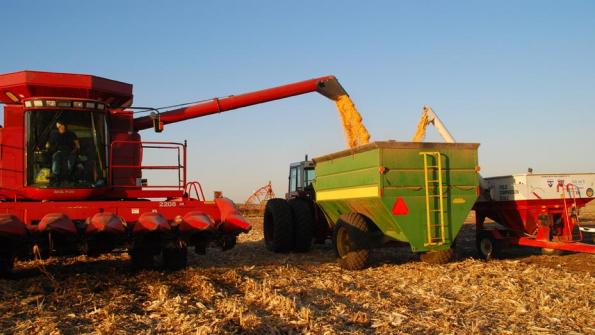September 28, 2016

Coarse grains such as corn and soybeans usually thresh relatively easily, but wet field conditions may slow field drying.
Adjusting rotor speed
Rotor speed should not be increased and concave clearance should not be decreased more than necessary for threshing, but spongy corncobs or damp soybean pods may be more difficult to thresh. Greater rotor speed or reduced concave clearance may be necessary in these conditions.
Evaluate need
Evaluate the need for combine adjustment by checking for unthreshed corn or soybeans behind the combine and in the grain tank before being overly aggressive with threshing; causing damage to seed coats and increasing the potential for storability problems.
Larger bits of cobs or pods in the cleaning system require more attention to adjustment of airflow and sieve opening sizes in the cleaning shoe. Use an adequate amount of airflow to help fluidize the bed of material and allow pneumatic as well as mechanical separation.
In corn, the head should be operated low enough to gather all ears. Avoid going lower than necessary if a significant amount of soil or sediment is on lower parts of the stalk, as soil adds wear inside the combine and increases cleaning load. If ears hang low, the head will need to be operated low enough for gathering. Soybeans will have to be cut at ground level, regardless.
You May Also Like




